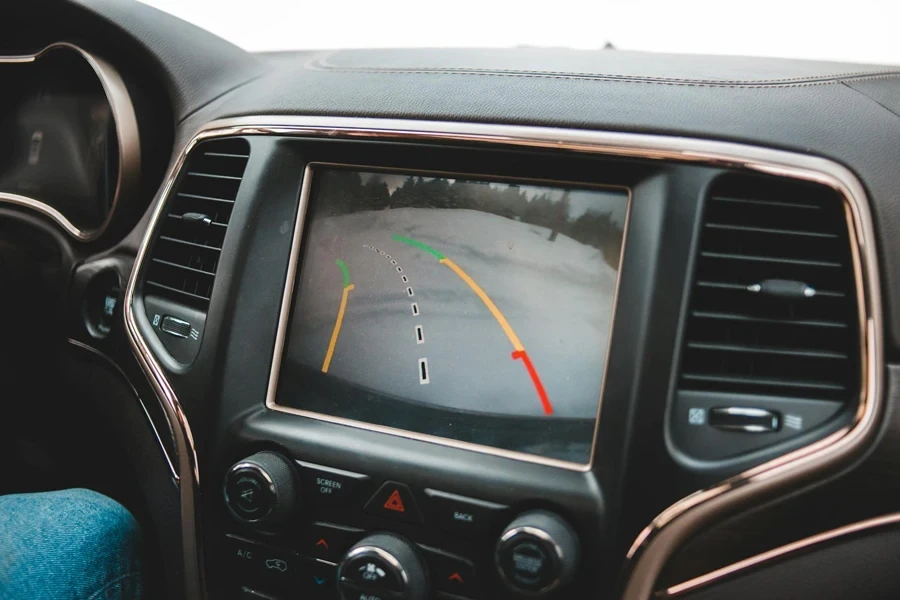Table of Contents
● Introduction
● Market overview
● Advantages of car and vehicle cameras
● Things to consider when selecting products
● Conclusion
Introduction
The integration of cameras in vehicles has become a cornerstone of modern automotive technology, driven by the demand for increased safety and operational efficiency. Automotive cameras, now more sophisticated than ever, play a pivotal role in supporting Advanced Driver Assistance Systems (ADAS), enhancing visibility and contributing to safer driving environments. These devices not only help in accident prevention but also offer substantial benefits in terms of security and insurance claims, proving their worth as indispensable tools in the automotive industry. By providing critical visual data, these cameras empower vehicles to navigate more securely and efficiently. As the technology advances and adoption grows, automotive cameras are set to become even more integral to driving dynamics and safety protocols.
Market overview

The automotive camera market is experiencing significant growth, with its valuation set to rise from USD 8.0 billion in 2023 to an estimated USD 13.9 billion by 2028, according to MarketsandMarkets. This robust expansion, reflected in a Compound Annual Growth Rate (CAGR) of 11.7%, is propelled by the increasing adoption of Advanced Driver Assistance Systems (ADAS) across both developing and developed nations. As automotive safety standards evolve, the demand for cameras equipped with sophisticated technology for applications such as park assist, pedestrian detection, and cross-traffic alerts continues to surge.
Market share
Market share distribution is also witnessing dynamic shifts, with major manufacturers and regions playing pivotal roles. As per the same source, more than 85% of the market’s demand comes from the passenger car segment, with significant contributions from leading automotive nations such as the United States, Germany, Japan, and South Korea. Technological advancements are further catalyzing market dynamics; for example, integration with other sensor technologies and the development of cameras with enhanced capabilities for autonomous driving are setting new standards in the industry.
Technological advancements
Moreover, the rapid advancement in camera technology, such as improvements in image processing and the incorporation of artificial intelligence for real-time data analysis, is significantly influencing market trends. These innovations are not only enhancing the functionality and efficiency of automotive cameras but also driving their deeper integration into modern vehicles, ensuring their growing indispensability in the automotive sector.
Advantages of car and vehicle cameras
The integration of cameras in vehicles significantly enhances safety features, contributes to financial savings on insurance, deters theft, and provides crucial legal evidence, all through advanced technology and intelligent design.

Safety enhancements
Automotive cameras are central to modern safety innovations in vehicles, crucial for Advanced Driver Assistance Systems (ADAS). These systems rely on cameras to implement features like collision avoidance, where the camera detects an imminent crash and triggers the vehicle to engage brakes autonomously. Similarly, pedestrian detection systems utilize sophisticated image processing algorithms to recognize human figures from other objects based on shape, movement, and context clues, initiating alerts or direct actions to prevent accidents. This technology not only increases the safety of the vehicle occupants but also enhances the safety of pedestrians and other road users.
Insurance benefits
Insurance companies favor vehicles equipped with dash cams due to the tangible proof these devices provide in the event of accidents. This proof aids in the accurate assignment of fault, thereby streamlining the claims process. Moreover, the clarity of high-definition video recordings can decisively determine the events leading to an accident, reducing the possibility of fraudulent claims. Insurers often offer discounts on premiums for vehicles fitted with dash cams, acknowledging their role in reducing claim disputes and the likelihood of fraud.
Theft deterrence
Beyond just recording, some vehicle cameras are equipped with motion sensors that activate recording even when the vehicle is parked. This feature acts as a significant deterrent to theft and vandalism, as perpetrators are likely to abandon any illicit intentions knowing their actions are being recorded. The visual deterrent of a camera and the functional aspect of recording when tampering is detected combine to protect the vehicle effectively from theft-related losses.
Legal protection
In legal scenarios, the unbiased footage from dash cams provides a factual account of events, crucial for resolving disputes arising from road incidents. This footage becomes a key piece of evidence in court, helping to elucidate the circumstances of the incident without reliance on often unreliable and contradictory eyewitness accounts. The precision of this recorded evidence can be instrumental in legal proceedings, offering a clear sequence of events that can influence the legal outcome favorably towards the truth.
Things to consider when selecting products

When selecting automotive cameras, several critical factors must be considered to ensure the product meets the necessary standards for effectiveness and reliability. The quality of the camera, its field of view, storage capacity, and additional features such as GPS tracking and night vision are all essential elements that can significantly impact the camera’s functionality and the safety features it supports.
Video quality
The resolution of automotive cameras is paramount when capturing footage that may be used for everything from incident analysis to legal evidence. High-resolution cameras, ideally offering 1080p or better, provide clearer, more detailed images. This clarity is crucial in scenarios where fine details, such as license plate numbers and street signs, must be discernible in the footage. A higher resolution ensures that these details are captured with sufficient clarity to be useful in various applications, including insurance claims and legal cases.
Field of view
A camera’s field of view (FOV) determines the extent of the scene captured at any given moment. A wider field of view allows for greater coverage of the vehicle’s surroundings, which is critical in capturing potential hazards that occur at the periphery of a vehicle’s typical line of sight. Cameras with a FOV of at least 140 degrees are generally recommended to ensure that the camera captures as much of the road and its surroundings as possible, thereby enhancing the vehicle’s ability to record incidents from multiple angles.
Storage capacity
Storage capacity is another crucial factor, as it determines how much footage can be stored before it needs to be overwritten or downloaded. Cameras equipped with the capability to support high-capacity memory cards, typically up to 128GB or more, allow for extended recording times. This is particularly important in environments where vehicles are operated frequently or over long distances, ensuring that all necessary footage is retained without frequent user intervention.
Additional features
Advanced features can significantly enhance the utility and effectiveness of automotive cameras. GPS tracking, for instance, embeds location data into video files, providing context that is vital during incident reviews or legal examinations. Night vision capabilities are essential for clear recording under low-light conditions, ensuring that footage is usable regardless of the time of day. Furthermore, impact sensors that trigger recording in the event of an accident ensure that critical moments are captured, even if the vehicle is not running.
Conclusion
In conclusion, the integration of cameras in modern vehicles significantly enhances safety, legal protection, and operational efficiency. These devices are pivotal in deploying advanced driver assistance systems, offering clear, detailed footage for insurance claims, and providing irrefutable evidence in legal disputes. With features such as high-resolution video capture, wide fields of view, substantial storage capacity, and advanced functionalities like GPS tracking and night vision, automotive cameras stand as indispensable tools in today’s vehicles. Their role in promoting safer driving environments and their contributions to vehicle security underscore their growing importance in the automotive industry.




